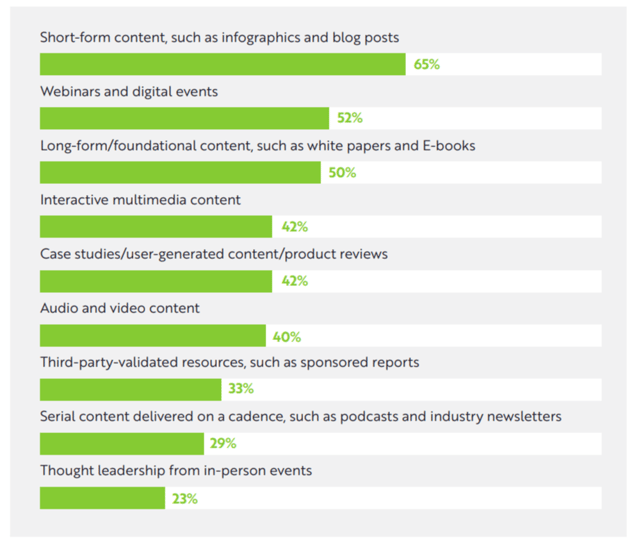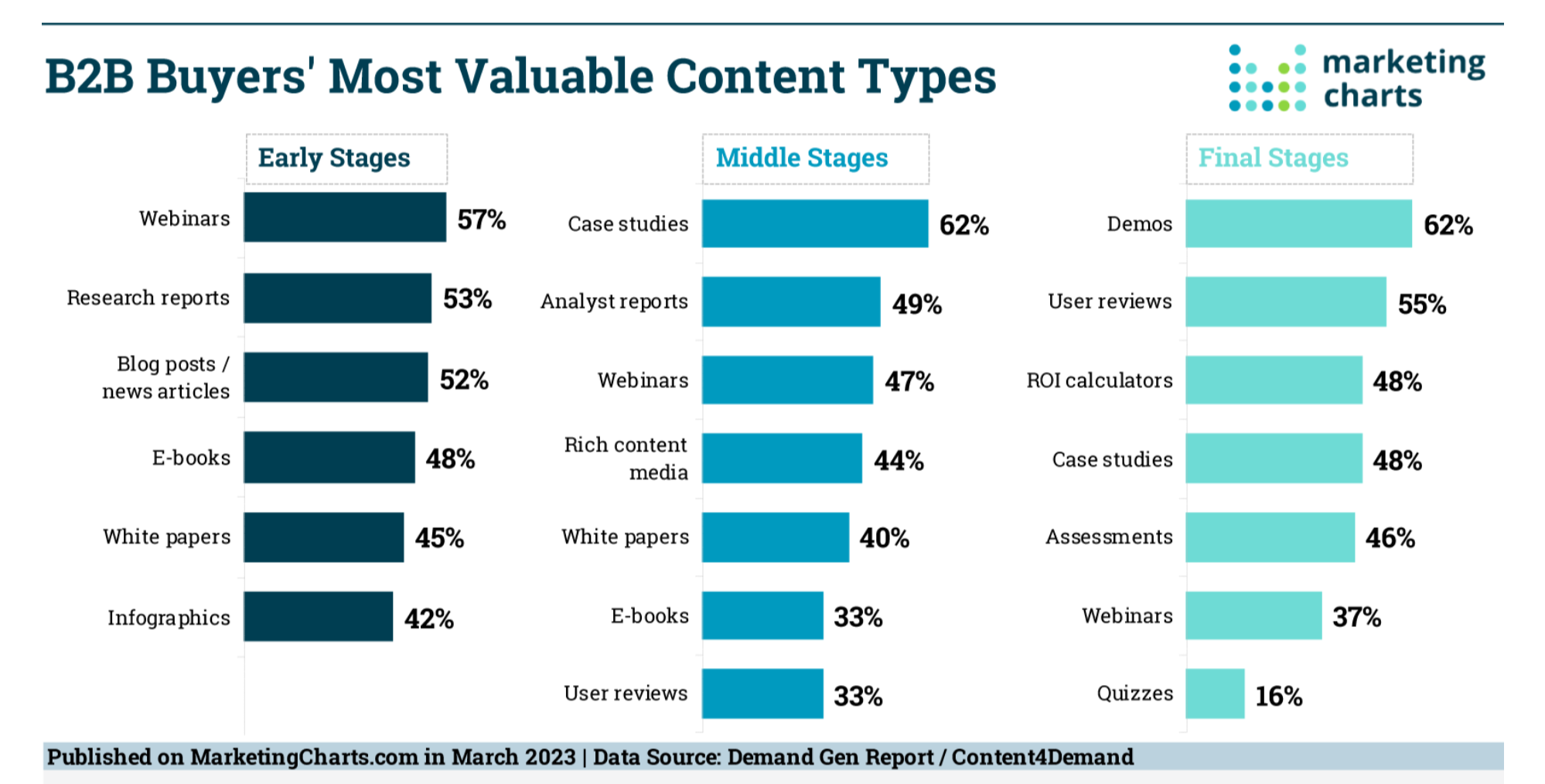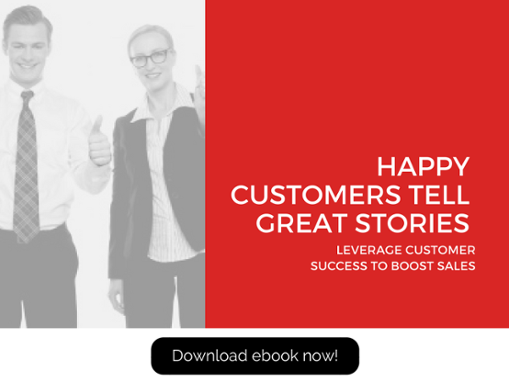 Content is a critical part of the marketing mix — it helps establish your brand as an authority within your industry and builds trust with your prospects. Whether it’s ebooks that attract prospects or case studies that make your audiences lean in, each piece of content has the opportunity to support the buying journey and drive sales results. Let’s take a closer look at what types of content drive results.According to a recent study from Demand Gen Report in association with Content4Demand, B2B buyers want to engage with content that drills down into relevant or specific areas and isn’t too sales-heavy. That means content needs to be objective and informational with no sales pitch. Content strategies must focus less on product specifics and more on business value, adding more insights from industry thought leaders and analysts.
Content is a critical part of the marketing mix — it helps establish your brand as an authority within your industry and builds trust with your prospects. Whether it’s ebooks that attract prospects or case studies that make your audiences lean in, each piece of content has the opportunity to support the buying journey and drive sales results. Let’s take a closer look at what types of content drive results.According to a recent study from Demand Gen Report in association with Content4Demand, B2B buyers want to engage with content that drills down into relevant or specific areas and isn’t too sales-heavy. That means content needs to be objective and informational with no sales pitch. Content strategies must focus less on product specifics and more on business value, adding more insights from industry thought leaders and analysts.
Buyers Gravitate Toward Quick-Hitting Assets
Digital channels are growing more crowded each year, forcing today’s buyers to become more selective with the content they engage with. Marketing teams that fail to tweak their content generation tactics accordingly — including everything from messaging to layout and length — will be left behind. According to the survey results, the top content formats that B2B buyers find most appealing right now include:
Blogs still remain one of the top lead-generation tools. The benefits of blogs are many:
- Helps Establish Industry Leadership - Blogs are a great platform for thought leadership content. Consistent creation of valuable content for your target audience will establish trust between you and your prospect. Organizations can delve deep into products, industry trends, use cases, technology, and vision.
- Blogging increases traffic to your website – Studies show that blogging increases traffic to your website by 55%. Many of the blogs we create and manage drive anywhere from 20-35% of all web traffic in the first six months.
- Helps you attract more qualified leads – More web traffic means more opportunities to convert that traffic to leads and sales.
- Creates more inbound links - Companies that blog create 97% more inbound links. An inbound link is a link from another site to your website. Why does this matter? Because inbound links signal authority to search engines.
- Helps Shorten the Sales Cycle – Gartner’s Future of Sales research shows that by 2025, 80% of B2B sales interactions between suppliers and buyers will occur in digital channels. This is because 33% of all buyers desire a seller-free sales experience – a preference that climbs to 44% for millennials.
- Helps bring customers and prospects back to your site – If you are producing quality content, prospects will keep coming back for more until they eventually enter the buying cycle, where they will begin to engage with sales.
Learn more about blogging:
How a B2B Blog Makes You More Competitive
How Your B2B Blog Impacts Your Bottom Line
Blogs remain the #1 B2B Lead Generation Tool
Let’s take a look at how B2B buyers value content at each stage of the buying journey.
The Value of Case Studies
Customer success stories are essential for growing your business. Buyers increasingly expect to check with their peers before they’ll purchase from a company. In fact, 60-90% of the B2B buying process is complete before they even speak to the vendor.
Red Javelin believes that case studies are the most valuable content in your arsenal. Case studies validate your claims and create trust between you and your prospects.
You can create fabulous thought leadership content and attract lots of traffic to your site. But, if you can’t demonstrate how your customers are using your solution, then it isn’t likely you will get the sale.
“I can’t get my customer to talk!”
We hear this all the time, and we understand that legal or some corporate policy shuts this down. It is understandable because most firms don’t want to be liable for endorsing vendors, so they have a policy in place that prevents formal case studies or even joint press announcements. Because buyers understand this – they aren’t allowed to participate in case study activities - you can still develop a “blind” or “white label” case study that does not name the customer and will serve the same purpose.
To Gate or Not Gate
This is an ongoing debate in content marketing. Some claim that you scare off prospects when you ask them to give their information. But the data tells a different story. Only 15% of the respondents in the study said they would not give their information for high-value content.
No Sales Pitch
Unless the content is clearly labeled as a product brief or a competitive comparison, Red Javelin’s rule is that the last page of an ebook or white paper is the only place to include specific sales or product information. The rest of the content should be focused on addressing the prospect’s problem and how to solve that problem in a new or different way.






